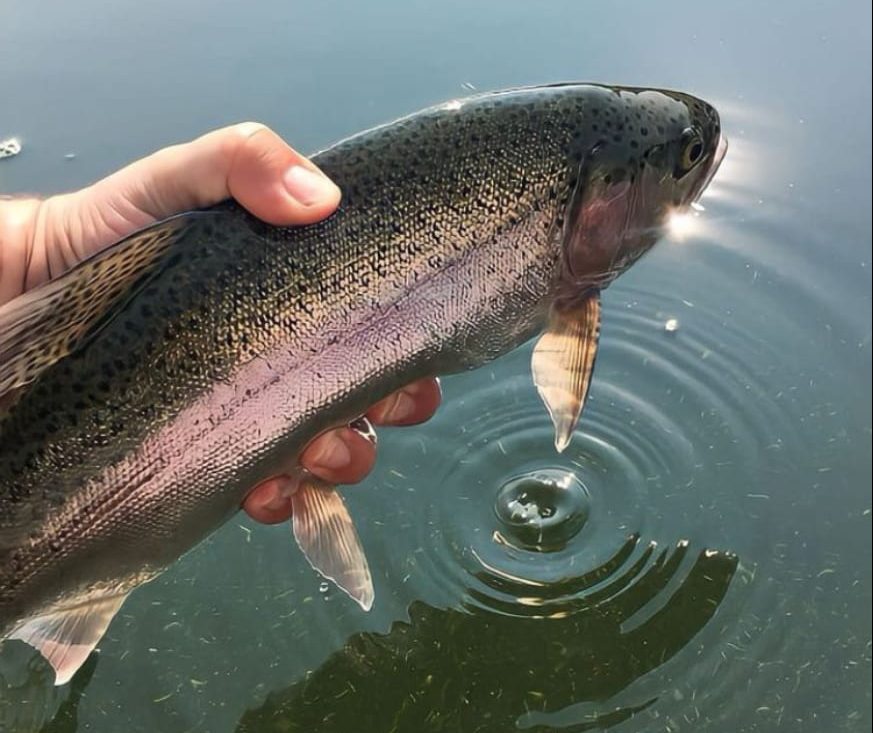How to Catch Still-Water Trout

Image by Kubie Brown
We trout anglers love our rivers. The sight, sound, and even the smell of flowing water stirs something in our souls and makes us think of drifting flies and rising trout. Rivers and streams are where we find our spirit as fly anglers and are an iconic part of the sport itself. Yet our love for flowing water often causes us to overlook some fantastic trout fishing opportunities, such as the ones found in still-water.
Lakes, ponds, and reservoirs have a lot of fantastic trout fishing opportunities where fish can grow to giant sizes and are very willing to take flies. Yet, many fly anglers believe that that lakes and ponds are simply too large and deep to catch trout. The truth is that so long as you know where and how to fish them, still-water trout fishing can provide you with some of your best days on water.
Finding Trout in Still-Water
Still-water trout are a different animal from those found in rivers. They live in deep water where they can hunt and feed almost constantly. Yet like river trout, they still migratory. Just like trout in rivers and streams that push upstream and drop downstream and move from deeper to shallower water as food sources and seasons change, still-water trout do the same thing, except on an almost hourly basis.
Trout living in lakes and ponds will often start their days cruising the edges of the lake for insects in the morning, before moving into deeper water in the afternoon to feed on baitfish. This constant travel makes transitional areas like drop-offs, peninsulas, or islands vital to successful still water fishing as they’re spots where trout can easily and quickly move from deeper to shallower water.
Another good spot to look for still water trout is around inflowing and outflowing rivers and streams. These spots provide a lot of oxygen for trout as well as insects, nymphs, worms, and baitfish caught in the current. In addition, trout will use these streams for spawning in the spring and fall meaning that if you’re fishing in the right season you can find a ton of stacked up fish.
Still-Water Nymphing
There are a couple of methods for catching trout in lakes and ponds, but nymphing for them is always going to be the most effective. Though they will chase down baitfish and feed on hatches on the surface, the bulk of a still-water-dwelling trout’s diet is going to be made up of small insect larvae, leeches, and nymphs which are easily imitated if you use the right set-up.
Lake fishing nymph rigs should have a long leader that is only slightly shorter than the depth of the water you’re fishing, usually between 6 and 16 feet long. Attach a large strike indicator to the top of the leader a few inches below your fly line and then add a pair of flies to the bottom. You can use a lot of different fly patterns for still-water fishing, including Woolly Buggers which imitate leeches and dragon fly nymphs, or larval imitations like Chironomids and Midges. Damselfly patterns and scud flies will also work well.
When you first start fishing, it’s best to use a severely contrasting pair of flies, such as a large black leech and a small red midge. Fish the pair for 30 to 40 minutes, casting them and letting them sink at rest along likely spots. If you aren’t having any luck, change to something completely different until you start getting some interest. It can be a tedious way to fish but once you’re dialed in on the flies that the trout are actively feeding on, you can have fantastic fishing.
Still-Water Streamer Fishing
If you’re the type of angler that likes a bit more action, streamer fishing is the way to go. Just like on in rivers, still-water trout are more than willing to chase down and crush a stripped streamer, though it can take some of special equipment and an understanding of techniques.
Trout living in lakes often hunt in deep water, so a line equipped with a sink-tip or a full sink fly line can be extremely helpful. A weighted streamer on a floating fly line can also work, but you must allow the streamer to sink before beginning your retrieve. Ideally you want to be fishing just above the bottom. On your first cast let your streamer sink, counting the seconds until it hits bottom, so you’ll have an idea of how long to let your streamer sink.
As far as streamer patterns go, small baitfish imitations like the Clouser Minnow are usually effective. If you’re after bigger fish, articulated streamers like the Double Fuego can really call up some monsters. You can also add a second smaller streamer or even a nymph as a dropper to your streamer to add a bit of extra incentive for any trout attracted to your fly but unwilling to feed.
When streamer fishing on a lake, you’ll want your fishing cadence to match the trout’s mood. When fishing in colder water, long, slow, steady strips are often more effective. In warmer or shallower water, you can strip faster and add a lot of twitches and flicks with your rod tip so that your streamer imitates a wounded baitfish, something that every trout will find impossible to resist.
Big Water and Big Rewards
Trout grow as large as their environments. In a big river, trout can grow to more than twenty inches, which is a trophy fish in anybody’s book. In a lake where there’s plenty of food their growth can be limitless. That is the true appeal of still-water fishing. Somewhere down in the in the dark depths a giant may lurk, and you have a chance to bring it into the light.










